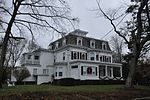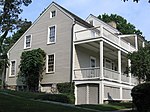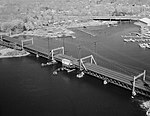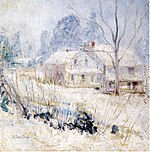Samuel Ferris House
Houses in Greenwich, ConnecticutHouses on the National Register of Historic Places in ConnecticutNational Register of Historic Places in Fairfield County, Connecticut

The Samuel Ferris House is a historic house at 1 Cary Road in Greenwich, Connecticut. Built around 1760 and enlarged around 1800, it is a well-preserved example of a Colonial period Cape, a rare survivor of the form to still stand facing the Boston Post Road in the town. It is also locally significant for its connections to the Ferris family, early settlers of the area.: 5 The house was listed on the U.S. National Register of Historic Places in 1989.
Excerpt from the Wikipedia article Samuel Ferris House (License: CC BY-SA 3.0, Authors, Images).Samuel Ferris House
East Putnam Avenue,
Geographical coordinates (GPS) Address Nearby Places Show on map
Geographical coordinates (GPS)
| Latitude | Longitude |
|---|---|
| N 41.0425 ° | E -73.589444444444 ° |
Address
Honorable Davis N. Theis Memorial Bridge
East Putnam Avenue
06870
Connecticut, United States
Open on Google Maps








